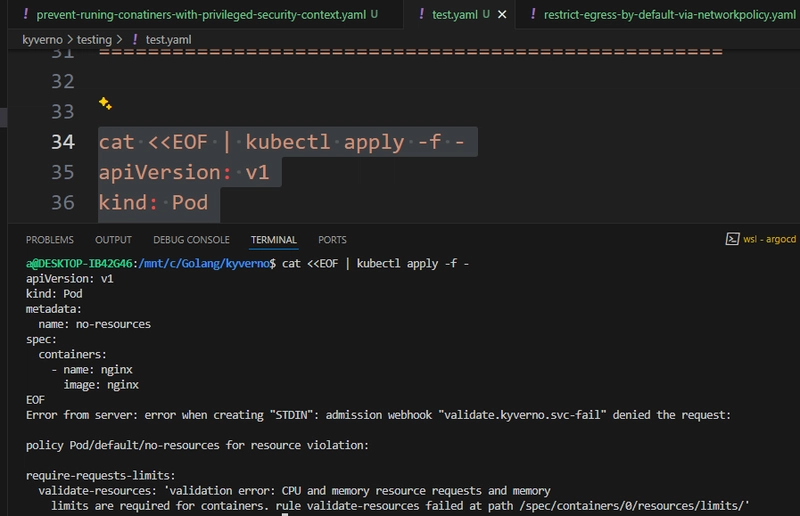Simple Python Code Examples to Build Your Skills
Python has become one of the most popular programming languages in the world — and for good reason. Its clean syntax, readability, and versatility make it an excellent choice for beginners and professionals alike. Whether you’re aiming to break into software development, data science, or automation, learning Python through practical examples is a great way to build your skills. In this post, we’ll explore some simple Python code examples that cover basic concepts. These examples are designed to help you get comfortable with writing Python code while solving useful problems. 1. Hello, World! Let’s start with the classic first program. This simple example shows how to print output to the console. print("Hello, World!") When you run this code, it displays the message Hello, World! on the screen. While basic, it introduces you to Python’s print() function, which you’ll use often to display results or debug your code. 2. Variables and Data Types Python makes it easy to declare variables without explicitly stating their type. Here’s an example: name = "Alice" age = 25 height = 1.65 # meters is_student = True print("Name:", name) print("Age:", age) print("Height:", height) print("Is Student:", is_student) This code introduces four common data types in Python: strings, integers, floats, and booleans. The print() statements show how to display variable values alongside text. 3. Simple Calculator Let’s build a simple calculator that adds two numbers input by the user: num1 = float(input("Enter first number: ")) num2 = float(input("Enter second number: ")) sum = num1 + num2 print("The sum is:", sum) Here, we use the input() function to read user input, convert it to a float, and add the numbers. This example teaches user input handling and basic arithmetic. Try changing the operator to subtraction, multiplication, or division! 4. Conditional Statements Want to determine if a number is positive, negative, or zero? Here’s a simple conditional statement in Python: num = float(input("Enter a number: ")) if num > 0: print("Positive number") elif num == 0: print("Zero") else: print("Negative number") This example shows how if, elif, and else control the flow of your program based on conditions. 5. Loops and Lists Python’s for loop makes it easy to iterate over a list. Here’s an example that prints each item in a list of fruits: fruits = ["apple", "banana", "cherry", "orange"] for fruit in fruits: print(fruit) This example introduces lists and loops. Try adding more fruits or printing them with their index number! 6. Finding the Largest Number in a List Let’s find the largest number in a list using a loop: numbers = [10, 45, 3, 99, 23] largest = numbers[0] for num in numbers: if num > largest: largest = num print("The largest number is:", largest) This code loops through the list, comparing each number to keep track of the largest value. It’s a useful pattern for solving many problems. 7. Functions in Python Functions help organize your code into reusable blocks. Here’s a simple function that greets a user: def greet(name): print("Hello,", name + "!") greet("Alice") greet("Bob") With this function, you can easily greet different users by calling greet() with their name as an argument. 8. Basic File Handling Reading a text file is straightforward in Python. Here’s how: with open('example.txt', 'r') as file: content = file.read() print(content) This example opens a file named example.txt and prints its content. The with statement ensures the file is properly closed afterward. Try writing to a file using 'w' mode! 9. Simple Guessing Game Let’s make a fun guessing game using a while loop: secret_number = 7 guess = None while guess != secret_number: guess = int(input("Guess the number (1-10): ")) if guess secret_number: print("Too high!") else: print("Congratulations! You guessed it.") This example combines loops, conditionals, and user input. It’s a great way to practice control flow while making an interactive program. 10. List Comprehensions Python offers a powerful way to create new lists from existing ones using list comprehensions. Here’s an example that squares each number in a list: numbers = [1, 2, 3, 4, 5] squares = [x ** 2 for x in numbers] print("Squares:", squares) This short, elegant syntax is a Python favorite among developers! Final Thoughts These simple Python code examples cover a range of foundational concepts — from variables and loops to functions and file handling. By experimenting with these snippets, you’ll gain confidence and build the skills you need to tackle more complex projects. The key to python tutorial is practice. Try modifying the examples, adding new features, or combi

Python has become one of the most popular programming languages in the world — and for good reason. Its clean syntax, readability, and versatility make it an excellent choice for beginners and professionals alike. Whether you’re aiming to break into software development, data science, or automation, learning Python through practical examples is a great way to build your skills.
In this post, we’ll explore some simple Python code examples that cover basic concepts. These examples are designed to help you get comfortable with writing Python code while solving useful problems.
1. Hello, World!
Let’s start with the classic first program. This simple example shows how to print output to the console.
print("Hello, World!")
When you run this code, it displays the message Hello, World! on the screen. While basic, it introduces you to Python’s print() function, which you’ll use often to display results or debug your code.
2. Variables and Data Types
Python makes it easy to declare variables without explicitly stating their type. Here’s an example:
name = "Alice"
age = 25
height = 1.65 # meters
is_student = True
print("Name:", name)
print("Age:", age)
print("Height:", height)
print("Is Student:", is_student)
This code introduces four common data types in Python: strings, integers, floats, and booleans. The print() statements show how to display variable values alongside text.
3. Simple Calculator
Let’s build a simple calculator that adds two numbers input by the user:
num1 = float(input("Enter first number: "))
num2 = float(input("Enter second number: "))
sum = num1 + num2
print("The sum is:", sum)
Here, we use the input() function to read user input, convert it to a float, and add the numbers. This example teaches user input handling and basic arithmetic. Try changing the operator to subtraction, multiplication, or division!
4. Conditional Statements
Want to determine if a number is positive, negative, or zero? Here’s a simple conditional statement in Python:
num = float(input("Enter a number: "))
if num > 0:
print("Positive number")
elif num == 0:
print("Zero")
else:
print("Negative number")
This example shows how if, elif, and else control the flow of your program based on conditions.
5. Loops and Lists
Python’s for loop makes it easy to iterate over a list. Here’s an example that prints each item in a list of fruits:
fruits = ["apple", "banana", "cherry", "orange"]
for fruit in fruits:
print(fruit)
This example introduces lists and loops. Try adding more fruits or printing them with their index number!
6. Finding the Largest Number in a List
Let’s find the largest number in a list using a loop:
numbers = [10, 45, 3, 99, 23]
largest = numbers[0]
for num in numbers:
if num > largest:
largest = num
print("The largest number is:", largest)
This code loops through the list, comparing each number to keep track of the largest value. It’s a useful pattern for solving many problems.
7. Functions in Python
Functions help organize your code into reusable blocks. Here’s a simple function that greets a user:
def greet(name):
print("Hello,", name + "!")
greet("Alice")
greet("Bob")
With this function, you can easily greet different users by calling greet() with their name as an argument.
8. Basic File Handling
Reading a text file is straightforward in Python. Here’s how:
with open('example.txt', 'r') as file:
content = file.read()
print(content)
This example opens a file named example.txt and prints its content. The with statement ensures the file is properly closed afterward. Try writing to a file using 'w' mode!
9. Simple Guessing Game
Let’s make a fun guessing game using a while loop:
secret_number = 7
guess = None
while guess != secret_number:
guess = int(input("Guess the number (1-10): "))
if guess < secret_number:
print("Too low!")
elif guess > secret_number:
print("Too high!")
else:
print("Congratulations! You guessed it.")
This example combines loops, conditionals, and user input. It’s a great way to practice control flow while making an interactive program.
10. List Comprehensions
Python offers a powerful way to create new lists from existing ones using list comprehensions. Here’s an example that squares each number in a list:
numbers = [1, 2, 3, 4, 5]
squares = [x ** 2 for x in numbers]
print("Squares:", squares)
This short, elegant syntax is a Python favorite among developers!
Final Thoughts
These simple Python code examples cover a range of foundational concepts — from variables and loops to functions and file handling. By experimenting with these snippets, you’ll gain confidence and build the skills you need to tackle more complex projects.
The key to python tutorial is practice. Try modifying the examples, adding new features, or combining concepts to create your own mini-projects. Python’s simplicity makes it easy to learn, but its depth ensures you’ll always have something new to explore.










































































